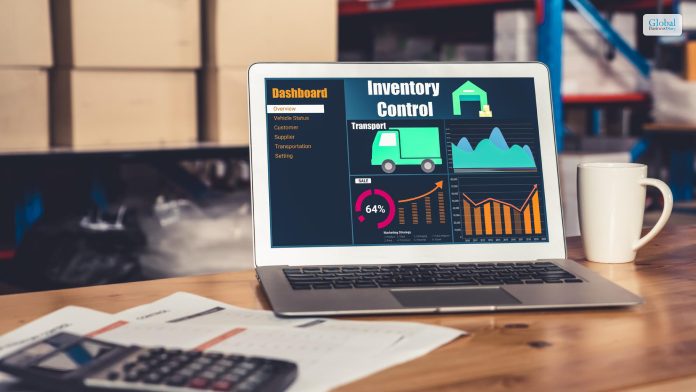2-1 Buydown: Essential Things To Know About It

A 2-1 buydown is a type of mortgage financing arrangement that involves temporarily reducing the interest rate on a mortgage loan. This is especially true for the first few years of term loans. This reduction in interest rate is achieved by “buying down” the interest rate with upfront payments or points.
You must develop and generate a clear idea about this concept. Without knowing the calculation process, things can turn worse for you in all possible manner. Try out the perfect solution that can make things work perfectly well in your favor.
Without proper planning, things can turn worse for you. Try out the best solution that can make things easier and effective for you in the process of your calculation.
How 2-1 Buydown Works?
There are several ways 2-1 buydown works. You need to know the ways that can make your process of working easier in this process. Some of the effective ways are as follows:-
1. Initial Interest Rate
At the start of the mortgage, the borrower is offered a reduced interest rate for the first year. This interest rate is typically 2 percentage points (2%) lower than the fully indexed interest rate. For example, if the fully indexed interest rate is 5%, the initial interest rate under the 2-1 buydown would be 3%. Distribution channels will help you in achieving your goals with ease.
2. Gradual Reduction
Over the subsequent years, the interest rate gradually increases. In the second year, the rate is increased by 1 percentage point (1%). So, using the example above, the interest rate in the second year would be 4%. In the third year and beyond, the interest rate typically returns to the fully indexed rate, in this case, 5%.
3. Stable Longterm Rate
The borrower or the seller may pay a lump sum upfront to fund the buydown. This upfront payment is used to compensate the lender for offering the reduced initial interest rate. The payment can be in the form of discount points, which are prepaid interest paid at closing. Strategy Consultant can make things easier for you.
What Is The Function Of 2-1 Buy Calculator?

There are several ways that you can adapt to buy a 2-1 buy calculator while attaining your requirements with complete ease. Some of the core functions of the 2-1 buy calculator are as follows:-
- Making proper payment calculations.
- Developing the amortization schedule.
- Making total cost comparison.
- Effective budgeting and planning is possible with amortization.
- The decision-making process will become easier for you in the long run.
2-1 buydown calculator serves as a valuable tool for borrowers considering a mortgage with a buydown arrangement.
It enables you to assess the financial impact of lower initial payments followed by gradually increasing payments. Strategy consulting can make your job easier using this tool.
By providing detailed payment schedules and cost comparisons, it assists borrowers in making informed decisions about their mortgage financing.
Benefits Of 2-1 Buydown Application
There are several benefits of the 2-1 Buydown application. It can help you to meet your requirements as per your needs. You should try out the best options that can make your life easier by following this process.
Benefits For Borrowers
There are several benefits for the borrowers when you make the application of the 2-1 Buydown application in your business. Some of the core factors to know here are as follows:-
1. Lower Initial Payments
The primary benefit for borrowers is that a 2-1 buydown temporarily reduces their initial monthly mortgage payments. This can make homeownership more affordable in the early years of the loan when money may be tight. Especially when purchasing a new home. Investopedia states the same thing.
2. Financial Flexibility
Lower initial payments can provide borrowers with greater financial flexibility. It can free up funds for other essential expenses or savings, allowing them to better manage their finances during the initial years of homeownership.
3. Budgeting Ease
Predictable monthly payments make budgeting more straightforward. Borrowers can plan their finances with confidence, knowing that their payments will increase gradually over time.
4. Qualification Assistance
Some borrowers may find it easier to qualify for a mortgage. With a 2-1 buydown, the initial lower payments can reduce the debt-to-income ratio, making the loan more accessible.
5. Future Income Growth
A 2-1 buydown is often beneficial for borrowers who expect their income to increase over time. As their financial situation improves, they can better absorb the gradually increasing payments when the buydown period ends.
Benefits For Lenders

Along with the borrowers, lenders also help your business to get things done on time. You need to get the perfect solution that can make things work perfectly well for you. Some of the key benefits to the lenders are as follows:-
1. Attracting Borrowers
Lenders can use 2-1 buydowns as a marketing tool to attract more borrowers. Lower initial payments can make homeownership more appealing, potentially increasing demand for mortgage loans.
2. Reduced Risk
Lenders may view 2-1 buydowns as a way to mitigate risk. Lower initial payments can make it easier for borrowers to meet their financial obligations, reducing the risk of delinquency. Foreclosure during the critical early years of the loan.
3. Competitive Advantage
Offering 2-1 buydown programs can give lenders a competitive advantage in the mortgage market. Borrowers may be more inclined to choose a lender that provides such financing options.
4. Customer Retention
Lenders that offer 2-1 buydowns may retain customers over the long term. Borrowers who benefit from lower initial payments and have a positive experience with their lender may be more likely to stay with that lender for future financial needs.
Final Take Away
Hence, a 2-1 buy-down can offer you the complete solution to your problems with complete ease. You need to follow the process that can make things easier and effective for you in all possible manner.
You can share your views with us in the comment box. It will help us to know your take on this matter. Plan out the perfect solution that can make things easier for you to reach your goals with clarity.
Keep in mind that this is a simplified explanation, and mortgage calculations can be more complex, especially when taxes, insurance, and other factors are included. To save time and get accurate results, you can use online 2-1 buydown calculators, which are readily available on various financial websites and mortgage calculators.
Need More Business Related News Click Below!!













